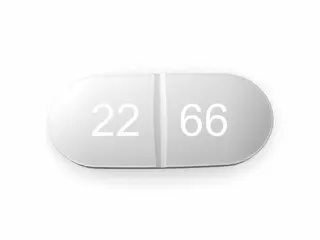Muscle Relaxant
Effective muscle relaxants to relieve tension and spasms quickly. Shop trusted brands for fast-acting relief and improved comfort. Safe, quality options available for purchase now.
Muscle relaxants are a group of drugs used to relieve muscle spasms, stiffness, and discomfort. They are commonly prescribed for conditions such as back pain, neck pain, multiple sclerosis, and muscle injuries. These medications work by acting on the central nervous system or directly on muscles, helping to reduce muscle tension and improve mobility.
Among the popular muscle relaxants available are Baclofen, Robaxin, and Zanaflex. Each one serves a slightly different purpose depending on the condition and patient requirements. Understanding their benefits and side effects is essential for safe use.
Baclofen is a widely used muscle relaxant. It works by inhibiting nerve signals in the spinal cord that control muscle spasms. Baclofen is often prescribed for spasticity related to multiple sclerosis and spinal cord injuries. It comes in oral tablet form and is typically taken two to four times a day. Users report significant relief from muscle stiffness and improved range of motion. However, Baclofen may cause side effects such as drowsiness, dizziness, weakness, and headache. It is important to start with a low dose to avoid sudden side effects and increase gradually as advised by a doctor.
Robaxin (generic name Methocarbamol) is another common muscle relaxant. It is used mostly to treat muscle pain and spasms associated with strains, sprains, and other musculoskeletal conditions. Robaxin acts centrally by depressing nerve impulses in the brain and spinal cord. One advantage of Robaxin is its relatively fast onset of action, often providing relief within an hour. Patients use it in combination with rest, physical therapy, and other painkillers for best results. Side effects may include lightheadedness, nausea, blurred vision, and drowsiness. Combining Robaxin with alcohol or other sedatives is not recommended as it may increase drowsiness and risk of falls.
Zanaflex (generic name Tizanidine) is prescribed mainly for muscle spasticity. It is effective for people with conditions like multiple sclerosis and spinal cord injuries where muscle tightness interferes with movement. Zanaflex works as an alpha-2 adrenergic agonist, which reduces nerve signals that cause muscle contractions. It is usually taken up to three times per day with or without food. Patients often notice improved muscle relaxation and decreased pain. Common side effects include dry mouth, drowsiness, dizziness, and low blood pressure. Dose adjustment may be necessary in patients with liver problems or those taking other medications that affect blood pressure.
All three medications require careful use under medical supervision. Muscle relaxants can cause sedation and impair coordination, so caution is needed when driving or operating machinery. It is also important to avoid combining these drugs with alcohol or other central nervous system depressants. Abruptly stopping some muscle relaxants like Baclofen can lead to withdrawal symptoms, so tapering the dose under doctor guidance is essential.
In terms of effectiveness, Baclofen is favored for its strong antispastic effects in neurological conditions. Robaxin serves well for acute musculoskeletal pain due to injury or strain. Zanaflex offers a good balance of potency and tolerability for spasticity but may require dose adjustments. Patient preferences often come down to how fast the medication works and its side effect profile.
Choosing the right muscle relaxant depends on the underlying cause, severity of symptoms, and individual response to the drug. Doctors usually start with the lowest effective dose and increase as needed. Combining muscle relaxants with physical therapy, heat application, and pain relief medications often yields the best results.
In summary, Baclofen, Robaxin, and Zanaflex remain trusted options in treating muscle spasms and spasticity. Their success depends on proper dosing, monitoring for side effects, and adherence to prescribed regimens. Patients should always communicate with healthcare providers about any adverse effects or concerns to optimize treatment outcomes. Muscle relaxants should never be used longer than necessary, and lifestyle changes such as exercise and ergonomics play a key role in managing muscle-related conditions.



